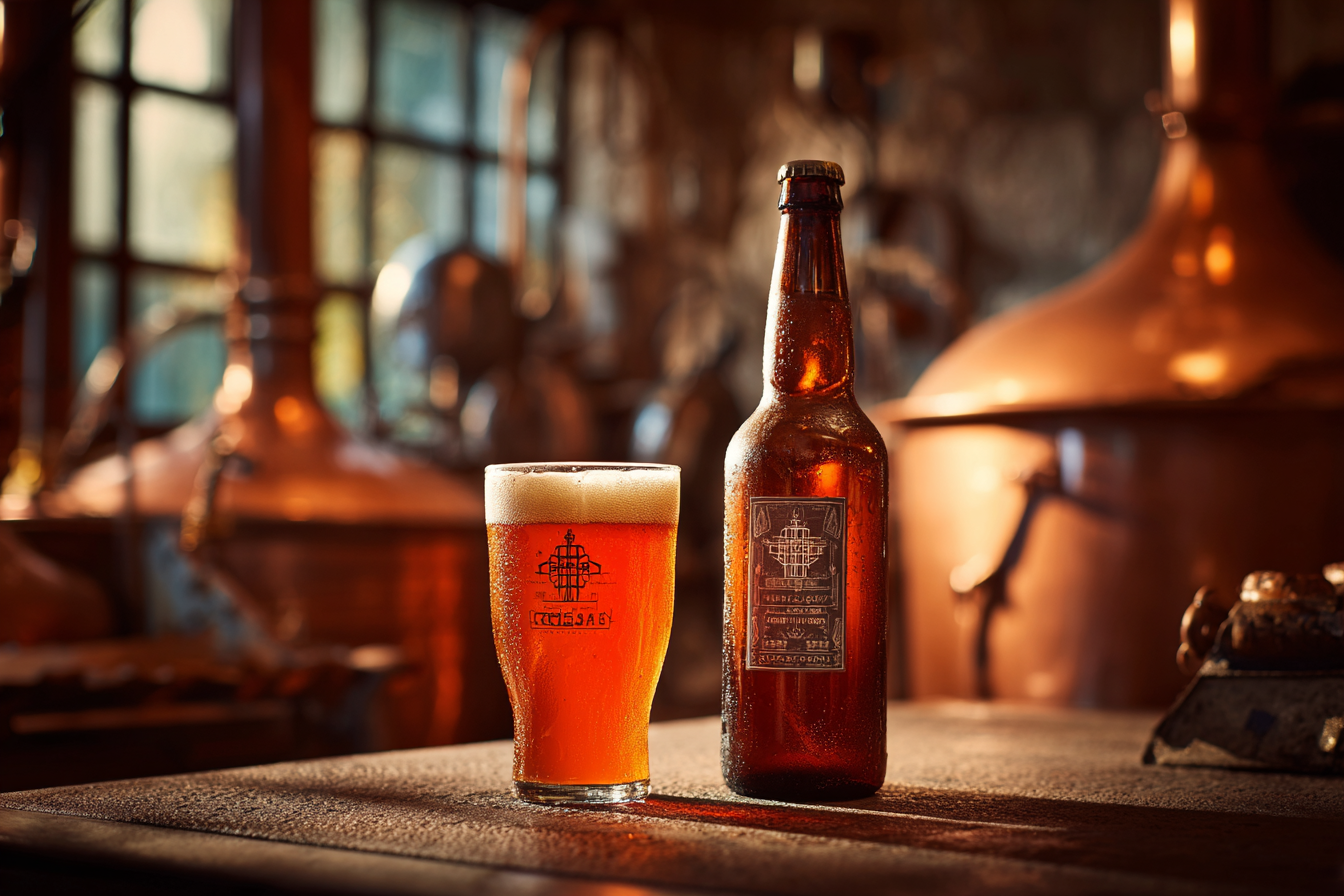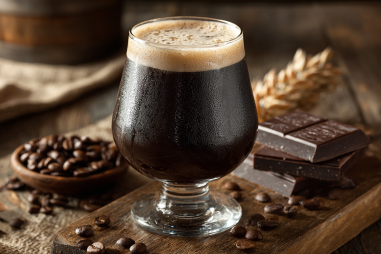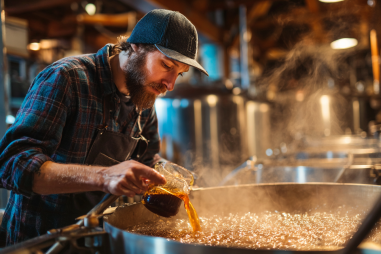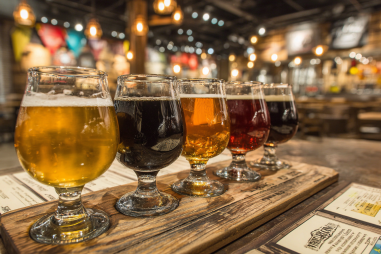American Amber Ale has carved out a special place in the vibrant landscape of craft beer. Known for its rich amber hue, balanced maltiness, and moderate hop character, this style offers drinkers a satisfying combination of depth and drinkability. But how did this popular style come to be? Tracing American Amber Ale’s history reveals a fascinating tale that intertwines traditional brewing influences with the innovative spirit of American craft beer. Let’s embark on a colorful journey through time to explore the origins, development, and enduring appeal of American Amber Ale.
Origins of Amber Ales Globally
The concept of amber ales isn’t unique to America. Amber-colored beers have existed for centuries across various brewing traditions worldwide. In Europe, particularly in the British Isles, amber ales often referred to ales with a moderate malt profile and a balanced hop presence, usually sitting between pale ales and darker brown ales. These beers often showcased caramel and toffee malt flavors, providing a rich and approachable drinking experience.
In countries such as England and Belgium, amber ales evolved naturally through the use of roasted and crystal malts, which contributed to their reddish-amber coloring. The style was appreciated for its complexity and subtlety, offering more malt sweetness than pale ales but avoiding the heaviness of stouts or porters.
Development of the American Amber Ale Style
While amber ales had long existed abroad, the distinctly American Amber Ale style began to come into focus during the late 20th century. As the U.S. craft beer movement gained momentum in the 1980s and 1990s, brewers sought to create beers that reflected their own tastes and available ingredients. Inspired by British amber and red ales but fueled by American hops and innovations, American brewers crafted a new take on amber ales that emphasized balance between malt and hops.
These beers featured caramel-forward malt characters with a noticeable but not overpowering hop bitterness, often showcasing American hop varieties famed for their citrus, pine, and floral notes. This harmony became a signature trait of American Amber Ale, appealing to drinkers seeking complexity without extreme bitterness or heaviness.
Influences from Traditional and Craft Brewing
American Amber Ale owes its character to both traditional brewing legacies and the bold experimentation characteristic of American craft brewers. Classic British amber and red ales influenced the malt-centric backbone of the style, including the use of crystal and caramel malts to develop deep flavors and color.
Meanwhile, the craft beer renaissance in America injected a fresh perspective. Brewmasters introduced diverse hop profiles, higher carbonation, and cleaner yeast strains to highlight clarity and brightness over the often earthier English ale yeast. This fusion of Old World malt traditions and New World hop innovation shaped American Amber Ale into a style that bridges familiarity with novelty.
Key Breweries and Milestones in American Amber Ale History
Several pioneering breweries played crucial roles in popularizing and defining American Amber Ale. One early example is Alaskan Brewing Company, whose Amber Ale, launched in the mid-1980s, gained a strong reputation for its rich malt profile balanced by assertive hop bitterness.
Similarly, Brooklyn Brewery’s Brooklyn Lager, introduced in the 1990s, helped elevate amber-style beers with its smooth maltiness, clean fermentation, and spicy malt character. These and other breweries including Anderson Valley Brewing and Deschutes Brewing Company contributed to establishing American Amber Ale as a mainstream craft beer offering.
Significant milestones include the formal recognition of Amber Ale as a distinct beer category by organizations such as the Beer Judge Certification Program (BJCP) during the 1990s and subsequent updates. Such recognition helped standardize style guidelines and encouraged brewers to experiment within the amber ale framework.
The Style’s Growth Within the Craft Beer Movement
As the craft beer movement exploded in popularity through the 2000s and 2010s, American Amber Ale experienced steady growth. Its approachable flavor profile made it an excellent gateway beer for newcomers and a reliable staple for seasoned beer enthusiasts looking for balance.
Craft breweries across the country began offering their interpretations, creating a diverse lineup of amber ales ranging from malt-forward and sweet to hoppier and more bitter variants. This expansion helped broaden the style’s appeal and cement its place in taprooms and retail beer shelves nationwide.
The versatility of American Amber Ale also made it a favorite for pairing with a wide variety of foods, enhancing its presence at festivals, beer dinners, and events tailored to craft beer lovers.
Modern Interpretations and Popularity Trends
Today, American Amber Ale continues to thrive with innovative takes that honor the style’s heritage while pushing boundaries. Modern brewers experiment with different malt combinations, hop varietals, and fermentation methods to bring fresh flavors and aromas to the style.
One noticeable trend is the incorporation of fruit-forward or experimental hops from new hop-growing regions, which add layers of complexity to the traditional caramel malt base. Some brewers also explore barrel-aging amber ales to introduce notes of vanilla, oak, and spice, elevating the beer into gourmet territory.
Despite the competition from trendy styles like IPAs and sours, American Amber Ale remains a beloved choice for those seeking a well-rounded beer with character and depth. Its balanced nature ensures it continues to earn a loyal following among both casual drinkers and beer aficionados.
Reflecting on the Legacy of American Amber Ale
American Amber Ale stands as a shining example of how brewing traditions can evolve and adapt through time and culture. It reflects the balance of respecting historical beer styles while embracing the creative spirit that defines American craft brewing. From its European roots to its American reinvention, this style has grown into a versatile, crowd-pleasing favorite.
Whether enjoyed in a cozy pub or at a bustling brewery festival, American Amber Ale invites drinkers to savor a beer steeped in rich history, vibrant flavors, and passionate craftsmanship. Its story is one of color, balance, and innovation—an ongoing journey that continues to enrich the world of beer.







